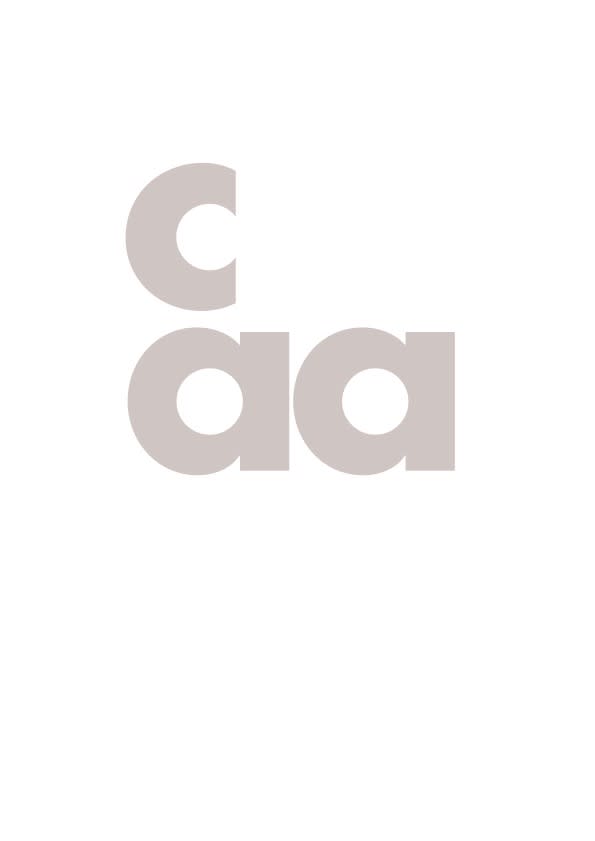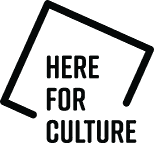We are so excited to have taken on nine talented new makers, working across ceramics, wood and glass.
Introducing our wonderful makers, Tim Fluck, Ömer Öner, Barbara Gittings , Eva Radulova, Beate Gegenwart, Ferri Farahmandi, Mathieu Jones, Verity Pulford and Hannah Lane

Tim Fluck has gained recognition for his unique approach that combines resin, acrylic and neon lights, pushing the boundaries of contemporary ceramic art. His tabletop-sized porcelain sculptures of various component parts are arranged to create playful yet precarious architectural compositions. The work brings together seemingly disparate forms and textures, from Minimalist-inspired Brutalism to the Maximalism of Memphis Design. Conceptually the work reflects on the origins of Brutalist Architecture, exploring the experience and ‘psychology of space’, and the idea of utopia as ‘the promise of something rather than the endpoint’. The contrast of clean and seemingly infinite forms, with playful and colourful imperfect protrusions, aim to represent the precarious harmony of hope and the perpetual reach for the elusive promise of utopia.
Tim Fluck is a ceramic artist based in East Sussex. He recently graduated with an MA in Ceramics from UCA. He is a BCB Fresh Talent Award winner, has appeared on the cover of Ceramic Art London’s catalogue and was selected as ‘one to watch’ by Ceramic Review.
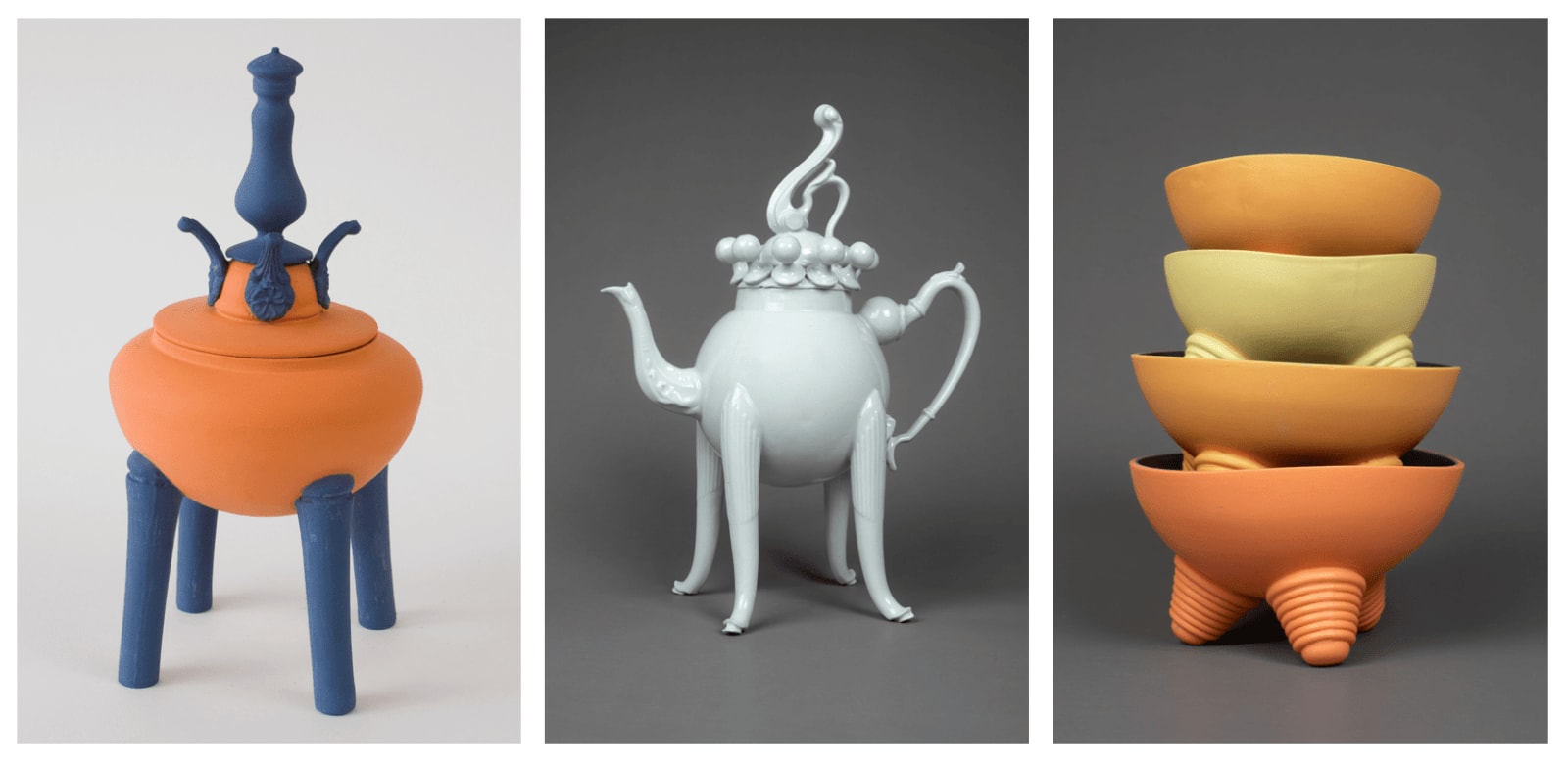
Ömer Öner’s artistic practice as a ceramicist revolves around the idea of repurposing found objects by reimagining and assembling them into highly crafted ceramic forms that tell a story of transformation and regeneration. Ömer employs the techniques of mould-making and slip casting to replicate and multiply the diverse array of discarded materials. Door handles, bed knobs, scrap wood, plastic, glass, and fragments of metal furniture are not mere cast-offs to Ömer; they are wellsprings of opportunity and inspiration.
He preserves the essence of these found objects first in plaster moulds and then transmutes them into porcelain or parian replicas through the slip casting. In this way, he conserves their distinctive forms while altering their materiality by casting them into ceramic. The resulting artworks bear the distinct characteristics of their origins, yet their function is transformed, giving them new life, meaning and material quality. His work is a testament to the fact that discarded items, often overlooked as trash, hold creative potential and inspiration.
Ömer Öner is a Turkish artist, BA and MA Medieval History graduate. Having worked as a lecturer and researcher in Turkey, he studied in Central Saint Martins BA Ceramic Design course in London.

Barbara Gittings is a ceramicist best known for her striking smoke-fired Nerikomi porcelain vessels. Contemplative and sensual, they have a sense of calm and serenity that invites the viewer to touch and be drawn into the surface. She embraces inexactness and experimentation in her process, blending precise technique with a loose application. The elemental uncertainty of working with clay, especially the random and uncontrolled shifts and reactions that take place when creating pattern through the clay, is central to her practice. She sees her work as the manifestation of a thousand transitions.
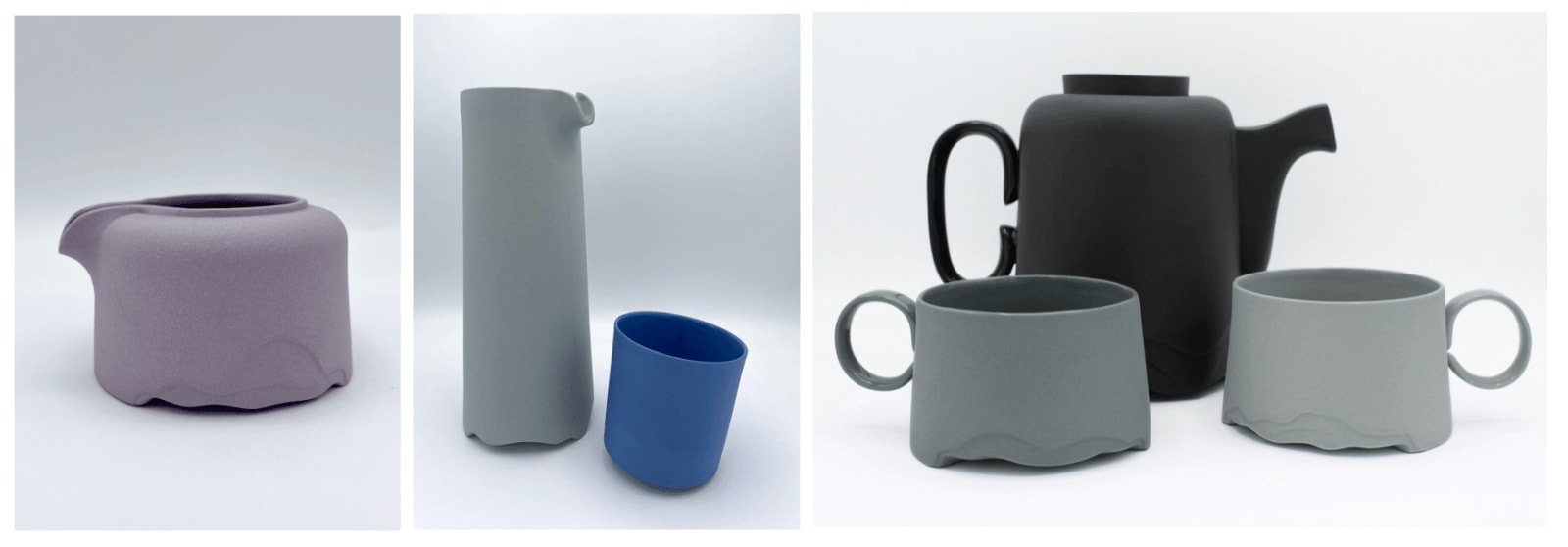
During her studies in Ceramic Design at Staffordshire University in Stoke-on-Trent, Eva Radulova was immersed in the history of ceramics production and had the rare opportunity to complete her student work exchange with Wedgwood, the legacy company famed worldwide for its bone china. Being in the studio of such a prestigious company allowed her to develop her unique style, which brings out the innate qualities of porcelain in sleek, contemporary designs. The challenge of blending classic techniques with innovative design is one of her great motivators, leading to functional slipcast porcelainware where clear lines fuse tradition and modernity in stylish silhouettes that meet the needs of modern life. She is constantly seeking to develop new shapes, finding inspiration in Japanese prints, whose elegant dynamism in works such as The Great Wave Off Kanagawa makes its way into the forms and colours of her ceramics.
She is fascinated by the geometry in nature, especially as growth and random chaotic forces such as weathering, sedimentation and erosion skew and distort the initial perfect symmetry. Her ceramics are constantly exploring these balances between symmetry and asymmetry, perfection and imperfection, the line between order and chaos and the juxtaposition between control and spontaneity. Nature can be enigmatic and one is instinctively trying to decipher its unknowable qualities. Images and patterns sink into the subconscious, to be released when one engages with the clay and the submerged information emerges to dictate the work in progress.
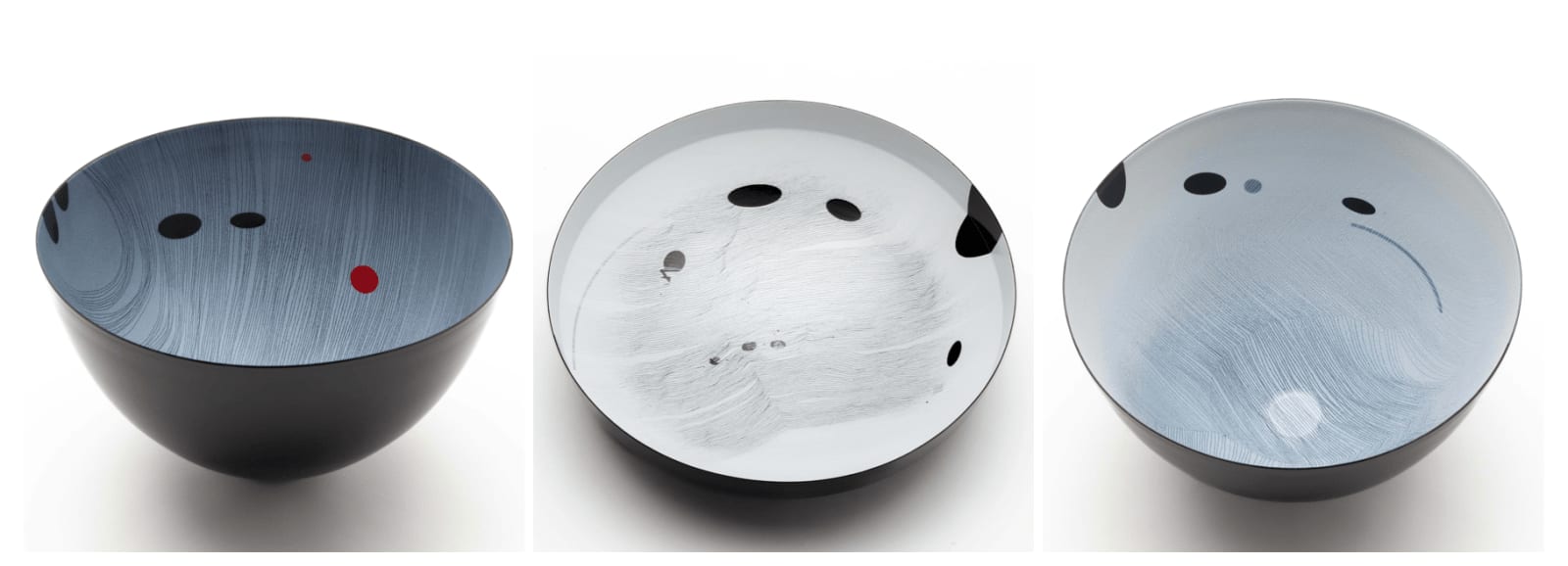
Beate Gegenwart’s principal medium is enamel, a thin layer of glass fired onto metal. She is passionate about this wonderful material and the vast array of beautiful surfaces and qualities that may be created. All pieces begin with drawing. She sees the initial drawing process as a ‘rehearsal’ for the permanent marks to be incised or cut; lines describing space. In the case of the wall pieces, these cut lines create shadows on the wall behind forming the ‘double’; connecting the artwork, wall and panel. Subsequently, the layers of enamel, fragile yet hard and permanent, interrupt the juxtaposition of the cut spaces, each meticulously drawn, scratched, abraded and engraved. This introduces an element of ‘chance’, the artwork being fired and re-fired several times, the handmade mark unpredictable and intimate. 3D vessels in steel and copper are a fascinating new departure for her. It enables the freedom to be playful with ideas and to make pieces with the most intricate drawings. It allows her to take the work off the wall, to create pieces in space, which may be used, moved or held. They belong to the wall pieces in concept, yet are ‘free’ and playful.
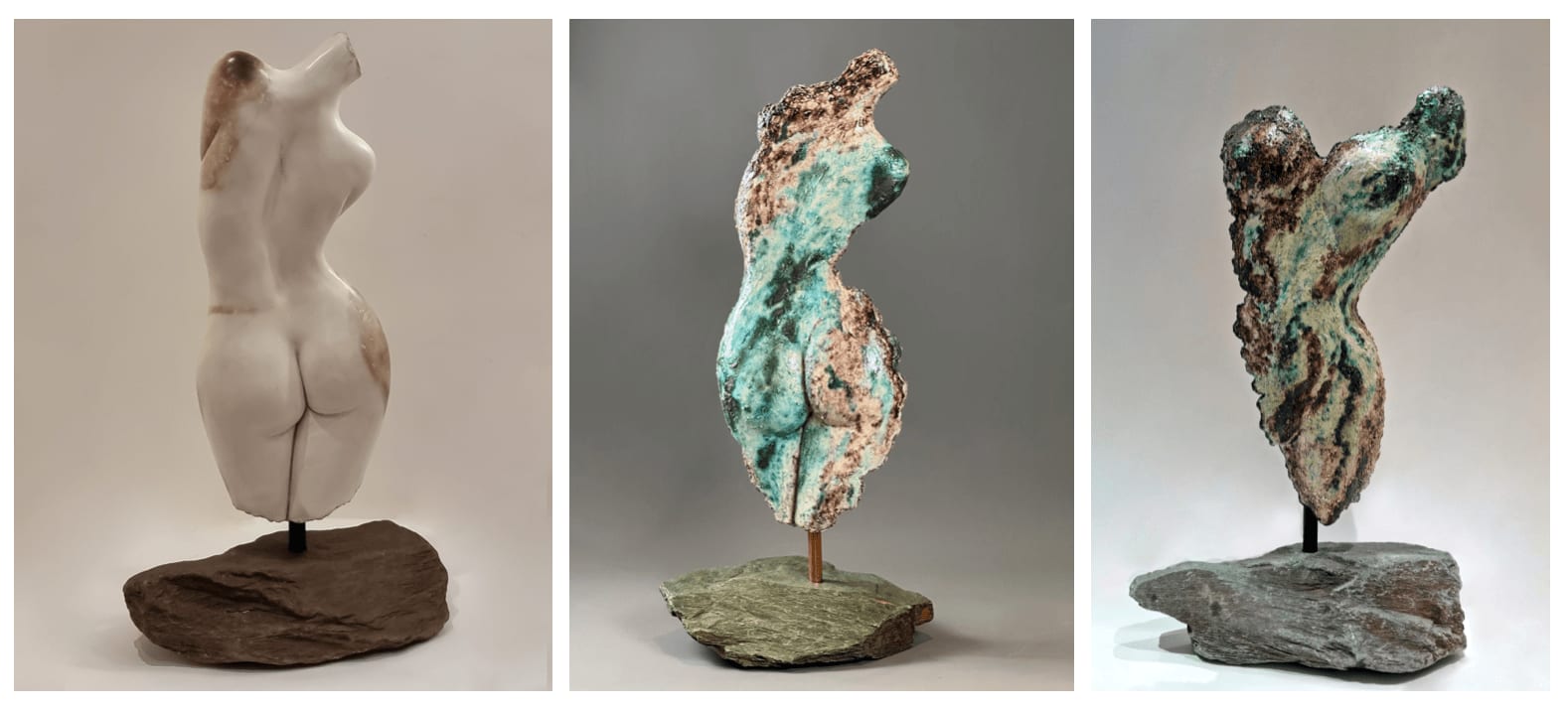
London-based Iranian ceramicist Ferri Farahmandi is deeply inspired by the symbiotic relationship between the human form and nature, making figurative sculptures that depict the dynamics and elegance of the female form. Handbuilding her sculptures from grogged earthenware clay, she applies oxides and glaze so that my pieces look as though they’ve been oxidised from being submerged underwater, highlighting the idea that physical and emotional change is a fundamental and natural force that affects us all. Her work emulates the transitional qualities and power of the sea through the weathered depiction of the surfaces. Over the last few years, acclimatising to the ongoing turbulence in the world has fostered her creative expression and inspiration from the natural world. Her stylistic evolution from shiny, smooth textures pre-pandemic to rougher, more irregular ones reflects the transformational changes to our lives.

Mathieu Jones is a craftsperson specialised in making unique and functional hand-crafted wooden objects. Mat lives and works in East London. He learned his craft at London Green Wood, a cooperative workshop run out of Hackney City Farm. Woodworking started for him as a creative outlet from his career in finance, but that eventually became an all-consuming passion. He largely uses hand tools, employing a mix of traditional and contemporary techniques. Working in this manner allows him to enter a meditative flow state that connects him with the natural materials he uses. He works with green, locally grown timber which is sourced from the by-products of London’s tree management system. The transformation of wood that would otherwise go to waste into beautiful objects is a large motivational force for him. Once he has finished shaping the piece, it is carefully allowed to dry. As all the remaining moisture from the tree leaves the timber, the piece will shift and warp in a predictable, but uncontrollable manner. Pieces that were originally turned perfectly round will become slightly oval shaped. Lines that were carved dead straight will curve. The interaction between this natural process and the maker is beautiful and freeing. Mat leaves a tool finish on his work that he believes conveys the characters of the timber as well as the maker.
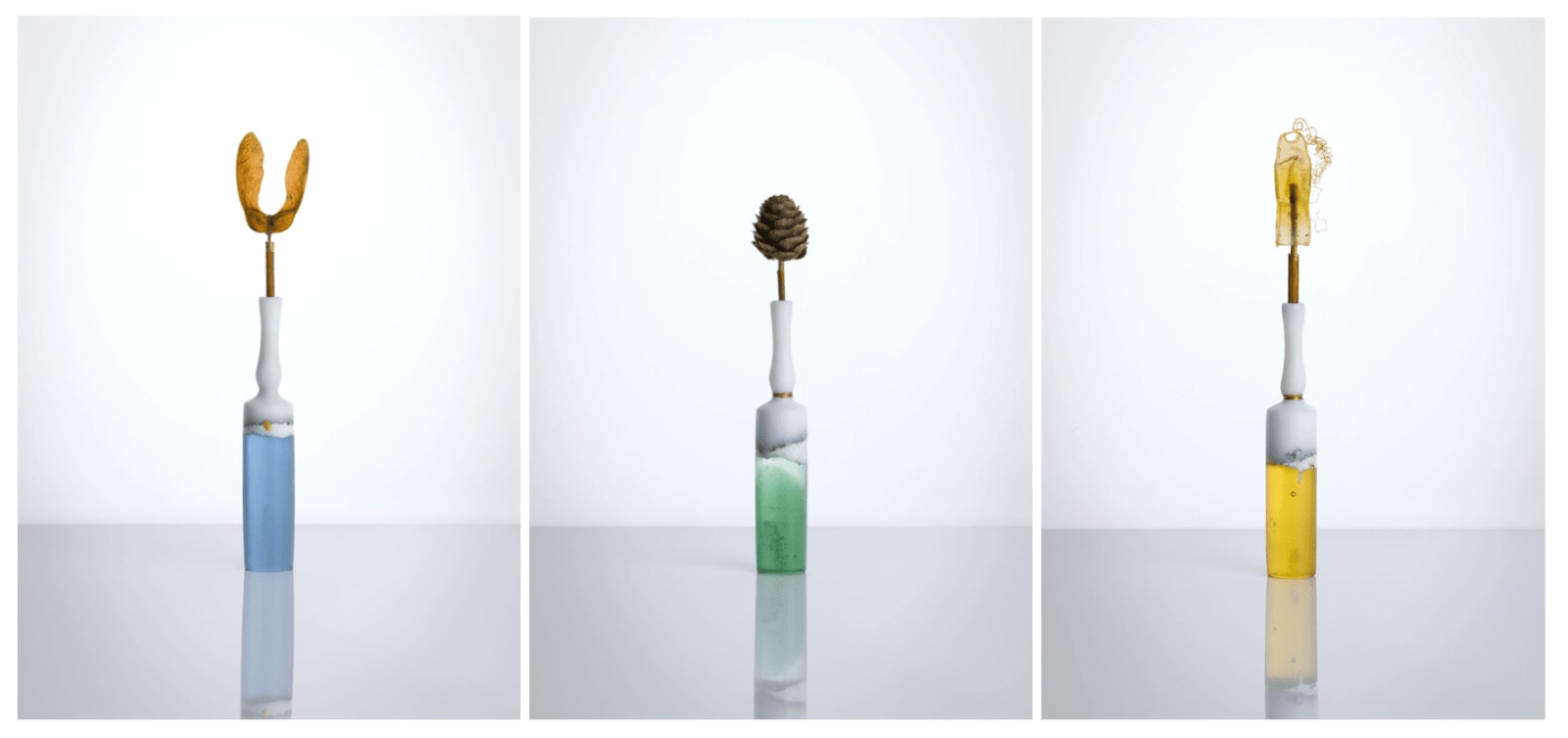
Glass artist Verity Pulford creates sculptural glass art that takes a magical realist look at the natural world. Combining a variety of processes - cast glass, pate de verre, kilnforming, painting, and etching with natural materials, she creates vessels, sculpture, installation, architectural and public art. The landscape around her studio in rural North Wales is her main source of inspiration. Natural structures such as algae, lichen, moss, grasses, ferns, and fungi demonstrate the complexity of life: within each organism are other organisms, each living its own unique existence. Layer upon layer of complexity exists within a universal oneness, the feeling that we are all the same thing- a system, in communion, a beautiful symphony. Her work uses the medium of glass to communicate this expansive, blissful space that we access through nature. Other inspirations are light, the magical atmosphere it can create in the landscape but also the way it interacts with glass- shadows, reflections, the qualities of matt and shiny surfaces. She is also interested and influenced by the cataloguing of nature- natural history artifacts, early cyanotypes, x-rays, microscopic images and botanical drawings.

Hannah Lane is an award-winning wood and paper artist employing traditional woodworking techniques to produce tactile bespoke artworks for exhibition, installation, and commission. Her process combines two materials that began at the same source - wood, a material of longevity and paper, a short-term material that she recycles into a solid material to create a new shape and texture, thus extending its journey. As the pieces are hand worked each material’s grain exposes the consequences of her working actions, revealing the unseen internal imprint as the surface is scraped away. She began working with paper in 2002 after accidentally leaving a book out in the rain, which led to the development of the award-winning Paperwork. She had previously specialised in woodworking during her degree and transferred those wood working techniques to the paper. Recycling has always been an important element within the work, so to be able to create a technique using the printed pages of unwanted books and paper that no longer had a use became a defining factor within her practise. She hand makes each item in her Nottinghamshire studio, beginning by making the material. Each page is layered and transformed back into a solid wood-like block. Traditional woodworking methods are then used to shape the objects; the unique surface patterns on the paper when the objects are worked can never be recreated and echoes wood grain; wood becomes paper becomes wood.
